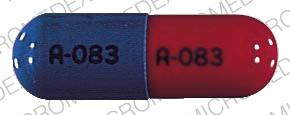Cyclandelate Disease Interactions
There are 3 disease interactions with cyclandelate.
Cyclandelate (applies to cyclandelate) coronary artery/CV disease
Moderate Potential Hazard, High plausibility. Applicable conditions: Cerebral Vascular Disorder, Ischemic Heart Disease
The use of cyclandelate produces vasodilatory effects which may compromise blood flow to coronary arteries or the cerbrovasculature. Therapy with cyclandelate should be administered cautiously to patients with coronary artery disease or cerebrovascular disease.
References
- (2001) "Product Information. Cyclospasmol (cyclandelate)." Wyeth-Ayerst Laboratories
Cyclandelate (applies to cyclandelate) glaucoma
Moderate Potential Hazard, Moderate plausibility. Applicable conditions: Glaucoma/Intraocular Hypertension
The use of cyclandelate has been associated with an increase in intraocular pressure. Therapy with cyclandelate should be administered cautiously in patients with glaucoma.
References
- (2001) "Product Information. Cyclospasmol (cyclandelate)." Wyeth-Ayerst Laboratories
Cyclandelate (applies to cyclandelate) prolonged bleeding
Moderate Potential Hazard, High plausibility.
The use of high doses of cyclandelate has been associated with prolonged bleeding in animal studies. Therapy with cyclandelate should be administered cautiously in patients with active bleeding or a bleeding tendency.
References
- (2001) "Product Information. Cyclospasmol (cyclandelate)." Wyeth-Ayerst Laboratories
Cyclandelate drug interactions
There are 91 drug interactions with cyclandelate.
More about cyclandelate
- cyclandelate consumer information
- Check interactions
- Compare alternatives
- Drug images
- Side effects
- Drug class: peripheral vasodilators
Related treatment guides
Drug Interaction Classification
| Highly clinically significant. Avoid combinations; the risk of the interaction outweighs the benefit. | |
| Moderately clinically significant. Usually avoid combinations; use it only under special circumstances. | |
| Minimally clinically significant. Minimize risk; assess risk and consider an alternative drug, take steps to circumvent the interaction risk and/or institute a monitoring plan. | |
| No interaction information available. |
Further information
Always consult your healthcare provider to ensure the information displayed on this page applies to your personal circumstances.


